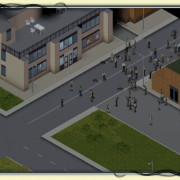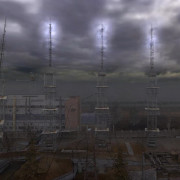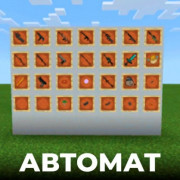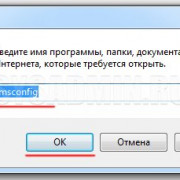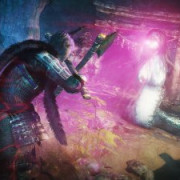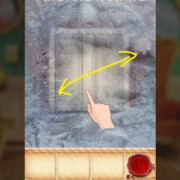Applied energistics
Содержание:
Unlocking Technology — Hunting For The Last Few Pieces
No, AE2 isn’t broken. The «final» pieces of the AE2 puzzle needed to move up the tech tree into ME Networks are the Inscriber Presses. There are four presses that you need (Listed in order of «tier»):
|
|
|
|
These presses are used to make the Circuits needed for the Tech 2 machines and beyond. They’re found randomly in Sky Stone Chest, which are located within Meteorites. Meteorites are randomly spawned throughout the world, normally underground. So, the hunt begins!
This hunt is a little less aimless than the hunt for your first Charged Certus Quartz Crystal. You’ll have a tool to help you on your way, the Meteorite Compass. The Compass will point you toward the chunk the meteor has generated in, not the specific block or the center of the meteor itself. You’ll have to do some digging and searching in order to find the meteor, and then you’ll have to take it apart and find the center, which is where the Sky Stone Chest will be located.
I did it!
After this is where the fun starts. You now have all the tools to start making the complex pieces that Applied Energistics has to offer! Get out there and start filling up data drives.
Matter Energy Tech: ME Networks and Storage
What is ME Storage?
Its pronounced Emm-Eee, and stands for Matter Energy.
Matter Energy is the main component of Applied Energistics 2, it’s like a mad scientist version of a Multi-Block chest, and it can revolutionize your storage situation. ME is extremely different then other storage systems in Minecraft, and it might take a little out of the box thinking to get used to; but once you get started vast amounts of storage in tiny space, and multiple access terminals are just the tip of the iceberg of what becomes possible.
What do I need to know to get started?
First, ME Stores items inside of other items, called Storage Cells; there are 4 tiers with ever increasing amounts of storage. In order to use a Storage Cell it must be placed inside either an ME Chest, or an ME Drive.
|
|
|
|
The ME Chest shows you the contents of the Cell as soon as its placed inside, and you can add and remove items from it as if it were a Chest, with the exception that the items are actually stored in the Storage cells, and not the ME Chest itself.
While the ME Chest is a great way to get introduced to the concept of ME, to really take advantage you need to set up an ME Network.
How do I setup my first network?
An ME Network is pretty easy to get started you need 2 things, an ME Chest / or ME Drive, and an ME Terminal ( or ME Crafting Terminal ) you’ll also need some kind of cable, such as ME Glass Cable to attach the ME Terminal too.
Place all these next to each other, and you have the world’s simplest network, storage and access.
You can add storage cells to the ME Drive, or use one in a ME Chest for storage, and access it all from the ME Terminal.
You might want to add more ME Terminal to other rooms, for this you’ll want to make some ME Glass Cable, any ME Blocks attached to ME Glass Cable will be connected to the ME Network
Expanding your Network
So you have some basic storage, and access to that storage, its a good start, but you’ll likely be looking to maybe automate some processing.
A great example of this is to place a ME Export Bus on the top of a furnace to dump in ores, and a ME Import Bus on the bottom of the furance to extract furnaced ores.
The ME Export Bus lets you export items from the network, into the attached inventory, while the ME Import Bus imports items from the attached inventory into the network.
Overcoming Limits
At this point you probably getting close to 8 or so devices, once you hit 9 devices you’ll have to start managing channels. Many devices but not all, require a channel to function. If the device deals solely with power, or connectivity like cables the device will not require a channel. Anything that uses items, or moves them around, will.
By default network can support 8 channels, once you break this limit, you’ll have to add an ME Controller to your network. this allows you to expand your network greatly.
Each face of the controller will output 32 channels, depending on whats is accepting these channels will determin how they get used, for instance, if you place a ME Dense Cable next tohe controller you will beable to carry a full 32 channels, however if you place a ME Drive next to it, or non-dense cable, you will only get 8 channels.
Tunneling
So your getting things started, but getting channels where you want them is kinda a nusance. Its time to start using P2P Tunnels. These when configured for ME, allow you to move channels from point to point; this allows you to move up to 32 channels per pair of P2P Tunnel.
| Last modified on 08/20/2014 12:16 PM CDTBy AlgorithmX2 |
Starting Out
AE2 isn’t the most expensive mod out there, but it definitely isn’t designed for the early game. Before you start to dive in you should make sure you have a decent amount of quartz, iron, redstone, glass, silicon, glowstone, diamonds, lapis, crystallized menril, and ender pearls. You will also need a few machines, including an enrichment chamber and some form of crusher, and the ability to cast liquids (Tinkers’ Construct seared brick smeltery or Tinkers’ Complement porcelain smeltery). You will also need a source of power.
The key to all of the AE2 machines are four crafting components that are made in the Inscriber. To make these components, you will need four corresponding presses: Inscriber Calculation Press, Inscriber Engineering Press, Inscriber Logic Press, Inscriber Silicon Press. All of these presses can be replicated in an Inscriber with the press as the top input, and an iron block as the middle input, but the first time you obtain them you will have to cast them in a casting table by pouring molten tough alloy, molten ferroboron, molten steel, and molten iron respectively over a cobblestone circuit mold. After you have your four presses, you are going to want to make yourself an Inscriber. You are now able to craft logic processors, logic circuits, and all sorts of lovely components you will need for AE2.
Interfaces
A sample ME Interface UI is shown on Figure 1:

A simple subnetwork. On the left is Network A’s storage bus and on the right is Network B’s interface. Network A can see all the storage cell contents of Network B. Notice that Network A is sharing power with Network B via quartz fibre on the top.
ME Interfaces serve a number of purposes. Firstly, they can act as a glorified import and export bus. Inserting items directly into an interface will insert the item into the ME network. Inserting items into slot B shown on Figure 1 will also insert items into the network. Placing an item(s) into one of the 8 slots of slot A in Figure 1 will force it to export that many item(s) into slot B. Something will need to pull the item out of the interface after, since it does not auto-output like an export bus.
As previously mentioned, interfaces also expose the contents of its network to any storage bus that connects to it.
Interfaces also allow for autocrafting. The bottommost row of 9 slots (slot C in Figure 1) can hold crafting/processing patterns (will be explained shortly). The top right slot (slot D in Figure 1) can hold upgrade cards.
Interfaces can be shape-crafted to be in panel-mode or block-mode. Functionally, there is no difference between the two modes. Panel-mode interfaces can seamlessly exist within AE2 facades and can attach to any 6 sides of a cable or a block, whereas block-mode interfaces will take up the whole block space.
Notification*
It is important to realize that Applied Energistics 2 (AE2) is a very different mod in the universe of Sky Factory 4 than it is in an isolated modded environment. The main reason for this is because the mod pack has disabled channels and removed a block called the ME Controller as it would be essentially useless in the absence of channels. The pack has also removed a number of other key elements of the mod such as a resource called Certus Quartz and a block called sky stone. Sky Factory 4 has instead altered crafting recipes accordingly so that these resources are not needed to progress. As a result, many aspects of the mod have limited usefulness and many of the tutorials or documentation on AE2 that are not made specifically for Sky Factory 4 will not be as useful. This guide will focus on the elements of AE2 which maintain functionality in the universe of Sky Factory 4.
Cables
Six main types of cabling exist: quartz fiber, glass cables, covered cables, smart cables, dense cables, and ME Conduits (from Ender IO).

3 dense cables in action. Each colored line that is lit represents 4 channels in use. In smart cables, each line that is lit represents 1 channel.
- Quartz Fiber holds power, but not channels. One of its primary uses is to share power between a network and its subnetworks.
- Glass cables can hold up to 8 channels and power. Covered cables are functionally equivalent to glass cables.
- Smart cables can hold up to 8 channels and power. In addition to this, they will visually show how many of the 8 channels are currently being used. This makes it very useful for debugging issues that will inevitably arise with any moderately complex network.
- Dense cables can hold up to 32 channels and power. Just like smart cables, they visually display how many channels are currently in use. The downside is that they cannot connect directly to most other devices except P2P Tunnels and other cables. This means that one of their main purposes is to carry an entire Controller face’s worth of channels over long distances.
- ME Conduits can hold up to 8 channels and power. They are from the Ender IO mod and cannot be colored the same way as AE2 cables. They also cannot connect to AE2 microblocks (such as terminals and flat-face interfaces).
- Dense ME Conduits can hold up to 32 channels and power. They are the dense version of the Ender IO ME conduits.
Note that glass cables, covered cables, smart cables, and dense cables can all be colored with dye using a shaped crafting recipe. Colored cables will not connect to cables of a different color. The one exception is the default fluix color, which can connect to all other colors. Dyes can also be removed by shaped crafting with a water bucket.
Cable anchors can also be used to prevent same-colored cables from connecting to each other.
Contribution
Before you want to add major changes, you might want to discuss them with us first, before wasting your time.
If you are still willing to contribute to this project, you can contribute via Pull-Request.
The guidelines for contributing contain more detailed information about topics like the used code style and should also be considered.
Here are a few things to keep in mind that will help get your PR approved.
- A PR should be focused on content. Any PRs where the changes are only syntax will be rejected.
- Use the file you are editing as a style guide.
Getting Started
- Fork this repository
- Clone the fork via
- SSH or
- HTTPS
- Change code base
- Add changes to git
- Commit changes to your clone
- Push to your fork
- Create a Pull-Request on GitHub
- Wait for review
- Squash commits for cleaner history
If you are only doing single file pull requests, GitHub supports using a quick way without the need of cloning your fork. Also read up about synching if you plan to contribute on regular basis.
Contribution
Before you want to add major changes, you might want to discuss them with us first, before wasting your time.
If you are still willing to contribute to this project, you can contribute via Pull-Request.
The guidelines for contributing contain more detailed information about topics like the used code style and should also be considered.
Here are a few things to keep in mind that will help get your PR approved.
- A PR should be focused on content. Any PRs where the changes are only syntax will be rejected.
- Use the file you are editing as a style guide.
Getting Started
- Fork this repository
- Clone the fork via
- SSH or
- HTTPS
- Change code base
- Run to apply automatic code formatting
- Add changes to git
- Commit changes to your clone
- Push to your fork
- Create a Pull-Request on GitHub
- Wait for review
- Squash commits for cleaner history
If you are only doing single file pull requests, GitHub supports using a quick way without the need of cloning your fork. Also read up about synching if you plan to contribute on regular basis.
The Basic Network
Now comes the fun part. A basic AE2 network consists of a powered Energy Acceptor, an ME Drive or ME Chest, some cable, and a terminal. Your items are stored in items called storage cells which come in four different sizes: 1K, 4K, 16K, and 64K bytes of storage. Regardless of size, each storage cell can only hold 63 unique items. The difference between the ME Chest and the ME Drive is that the chest has a built in terminal, but can only hold 1 storage cell as opposed to the ME Drive which needs an external terminal to access your items, but can store up to 8 storage cells. The ME Chest’s terminal can also only access items within itself even if it is connected to other ME Drives.
The energy acceptor can be placed anywhere in the network, as long as it is connected, meaning adjacent, to an ME Drive or a cable in the network. What the energy acceptor does is take energy from other mods/forms and convert it to a usable form for AE2. ME Drives which are placed next to each other will connect to each other as if they are wired together, so there is no need to lay cables connecting every ME drive. With that said, anything else that you want to be in the network will have to be connected with cables, including a terminal. In order to create storage space in the network for items, you have to craft some storage cells and place them into your ME Drives, or in your ME Chest. When you put storage cells into the ME Drives, you can see a visual update on the front of the ME Drive. When they are powered, ME Drives will show green lights in the slots that contain almost-empty storage cells, orange lights in the slots that contain semi-filled storage cells, and red lights in the slots that contain full storage cells. Additionally, most of the devices, including ME Drives, can have a priority set so that items will always try to go into devices with higher priorities first. The last thing to do is place a terminal onto some cable and right click the terminal to open up your AE2 network. You can see any items in the network using the terminal, as well as put items into and take items out of the system.
You will have to use the same type of cable for each network because different types of cable do not connect to each other. This is useful for creating different networks using different colored cables.
Autocrafting
When a valid pattern is inserted into an ME Interface, the recipe will be auto-craftable from a terminal. Once the autocraft for that recipe is initiated, all «input» items will be dumped into whatever inventory the pattern-holding interface is connected to.
The key thing to know is that, for processing patterns, the ME network will simply dump all the «input» items of the encoded pattern into the interface’s attached inventory and will expect the «output» item to be inserted into the network at some later point in time. If there isn’t enough space to dump items into, the ME network will wait until space frees up; it will not send parts of a recipe, it will send it all at once. The output item doesn’t have to be inserted into the same ME Interface that started the recipe; it can inserted from anywhere in the network, through any means (import buses work too), and it will satisfy the recipe. With this in mind, autocrafting in AE2 is actually very simple. The ME network has no idea what kind of inventory you are dumping the input items to, it simply dumps items and expects the pattern-specified output(s) back into the system. If it doesn’t ever get the expected output(s) back, the ME network will not allow you start another autocrafting recipe, so make sure that you have set the recipe properly. Recipes can also be cancelled at any point.
Let’s theorycraft an example. Let’s say you want to autocraft 1x tin cables. We need a processing pattern with: 1 1x tin wire and 1 rubber sheet. This can’t be dumped directly into an assembler because the rubber sheet has to be fluid extracted, so we will instead connect the interface to a chest. This will make the ME network dump a 1x tin wire and 1 rubber sheet into the chest whenever you request a tin cable from a terminal. From the chest, you can have a filtered Ender IO item conduit take all rubber sheets and insert them into a fluid extractor while taking all non-rubber items and inserting it into an assembler. The output of the assembler (a 1x tin cable) can then be inserted back into the ME network and the recipe will be considered «complete» by the ME network.
Note that you would probably also need to set up autocrafting for the 1x tin wires as well: 1 tin ingot->2 1x tin wires. This recipe could be hooked up directly to a Gregtech wiremill. But note if you do this, you will literally have a limit of 4×9 wiremill recipes. This is because interfaces can only hold 9 recipes each and only 4 of the 6 faces of a Gregtech machine can have an interface attached to it: one is a non-insertible «face» of the machine and the other would be used for EU input. To get around this, we can do what we did before and instead connect the interface to a chest. The chest can then have items transported from it to the machine. You will notice that doing it this way is also easily expandable since we can easily just add more chests/interfaces. As long as the ME network receives 2 1x tin wires after dumping a tin ingot into the chest, any setup is valid.

An interface connected to a chest allows for potentially infinite numbers of interfaces for a single machine.
Applied Energistics 2 Energy Usage in GT:NH
Nearly everything in AE2 requires power to run. Insert/extracting items from the system also consumes some energy. ME systems, by default, use an energy type of AE. Below are estimated quantities of AE/t required per device/storage unit when idle.
Storage Bus
Storage buses connect to other inventory-like devices, such as JABBA barrels, and treats those inventories like they were storage cells, allowing you to insert/extract from those inventory-like devices. Right clicking on a storage bus will bring up a UI in which one can specifiy which items will be stored by this storage bus, essentially acting as a filter of sorts. Since the inventory is treated as a medium to hold item, like a storage cell, one could theoretically have a drive-less ME network and use pure storage buses instead. Storage buses can be very useful in instances where an upgraded barrel (or a super chest) can hold more of a single item than a storage cell ever could. Storage busses can also be used on Drawer controllers for easy mass storage of multiple types with only one storage bus.
Furthermore, connecting a storage bus to an ME Interface will expose the contents of the network connected to that Interface to the network connected to the storage bus. In other words, if Network A has a storage bus and Network B has an ME Interface, connecting Network A’s storage bus to Network B’s interface allows Network A to see and interact with all items stored in Network B. This interaction is not two-way. In the aforementioned scenario, A can see the contents of B, but B does not see the contents of A. This allows one to create subnetworks. This feature should be used sparingly for performance reasons.

Figure 1: Interface UI
Установка[]
Основная статья: Установка модификаций с помощью Forge
- Установите Minecraft Forge.
- Скопируйте файл в папку .
Руды
| Изображение | Название | Описание |
|---|---|---|
| Кварцевая руда | Встречается на высоте от 16 до 72 блоков. Базовый элемент для создания всех предметов и блоков этой модификации. При разрушении выпадает 1-2 кварцевых кристалла и 0-1 кварцевой пыли. |
Материалы
| Изображение | Название | Описание |
|---|---|---|
| Кварцевый кристалл | Базовый предмет, необходимый для изготовления конвертирующих матриц и компонентов молекулярного сборщика. В некоторых крафтах взаимозаменяем с кварцем Нижнего мира. | |
| Кварцевая пыль | Используется для создания кремния, а также при крафте аметистовой пыли. В некоторых крафтах взаимозаменяем с пылью кварца Нижнего мира. | |
| Пыль кварца Нижнего мира | Используется для создания аметистовой пыли. В некоторых крафтах взаимозаменяем с кварцевой пылью. Используется для создания кремния. | |
| Аметистовая пыль | Основной компонент для создания МЭ кабеля. Используется при создании конвертирующих матриц. | |
| Аметистовый кристалл | Компонент для создания МЭ контроллера. | |
| Аметистовая жемчужина | Основной элемент при создании предметов беспроводной МЭ сети. | |
| Кремний | Используется при крафте процессоров. | |
| Конвертирующая матрица | Важный предмет, используемый в крафте машин, в которых происходит превращение предметов в энергию и наоборот. | |
| Энергетическая ячейка | Промежуточный компонент для создания предметов, потребляющих энергию. | |
| Беспроводной приёмник | Основной элемент при создании предметов беспроводной МЭ сети. |
Процессоры
| Изображение | Название | Описание |
|---|---|---|
| Механизм базового процессора | При переплавке образует МЭ базовый процессор. | |
| МЭ базовый процессор | Используется в крафте базовых механизмов и хранилищ. | |
| Механизм улучшенного процессора | При переплавке образует МЭ улучшенный процессор. | |
| МЭ улучшенный процессор | Используется в крафте более сложных механизмов и хранилищ. |
Инструменты
| Изображение | Название | Описание |
|---|---|---|
| Кварцевая кирка | Полностью идентичны своим железным аналогам. | |
| Кварцевая лопата | ||
| Кварцевый топор | ||
| Кварцевая мотыга | ||
| Кварцевый меч | ||
| Кварцевый нож | Служит для создания механизмов процессоров. | |
| Кварцевый ключ | Служит для поворота шин, настройки приоритетов хранения и демонтажа механизмов. Взаимозаменяем с ключами из BuildCraft, Thermal Expansion и OmniTools. | |
| Катализатор вибрации | Раскаляет блоки: превращает лёд в воду, булыжник в камень, песок в стекло, при использовании на руде выпадает сразу переплавленная руда. Использует энергию. | |
| Ускоритель энтропии | Охлаждает блоки: превращает лаву в обсидиан; камень в булыжник; воду в лёд. Использует энергию. | |
| Материальная пушка | Дальнобойное оружие. Стреляет шариками материи или самородками (в том числе и из других модификаций). | |
| Ручной дробитель | Аналогичен дробителю из IndustrialCraft 2, но не использует энергию. Вместо этого вы должны крутить рукоятку. Необходимое количество оборотов зависит от типа руды. Очень рекомендована на начальных этапах игры. |
Прочее
| Изображение | Название | Описание |
|---|---|---|
| Кварцевый блок | Декоративный блок. | |
| Железная пыль | Получается путём дробления железной руды в ручном дробителе. Совместима с другими модификациями. | |
| Золотая пыль | Получается путём дробления золотой руды в ручном дробителе. Совместима с другими модификациями. | |
| Мука | Получается путём дробления пшеницы в ручном дробителе. Совместима с другими модификациями. | |
| Маленький динамит | Уменьшенная версия стандартного динамита. |
Issues
Applied Energistics 2 crashing, have a suggestion, found a bug? Create an issue now!
- Make sure your issue has not already been answered or fixed and you are using the latest version. Also think about whether your issue is a valid one before submitting it.
- If it is already possible with vanilla and AE2 itself, the suggestion will be considered invalid.
- Asking for a smaller version, more compact version, or more efficient version of something will also be considered invalid.
- Go to the issues page and click new issue
- If applicable, use on of the provided templates. It will also contain further details about required or useful information to add.
- Click , and wait for feedback!
Providing as many details as possible does help us to find and resolve the issue faster and also you getting a fixed version as fast as possible.
Please note that we might close any issue not matching these requirements.
Synopsis[edit]
A basic ME Network starts with an ME Controller powered by a reliable energy source (EU RF or MJ) and an ME Drive or ME Chest with a Storage Cell inserted to be functional. Although the chest’s storage capacity is limited to one Cell, it has it’s purpose. The ME 1k Storage cell is the smallest and easiest to craft to get started, and can easily be upgraded to an ME 4k Storage cell as needed in time. Finally adding an ME Access Terminal will give access to the Network’s inventory. The layout of the components is versatile as long as they are touching each other or connected using ME Cable or ME Covered Cable.
The ME Controller is the hub of the network and coordinates and supply power to all components connected to it. From this basic set-up there are practically no limits to the ability to expand the network with a whole array of ME devices from remote access to full on demand Automation, the highlight of the ME Network.
